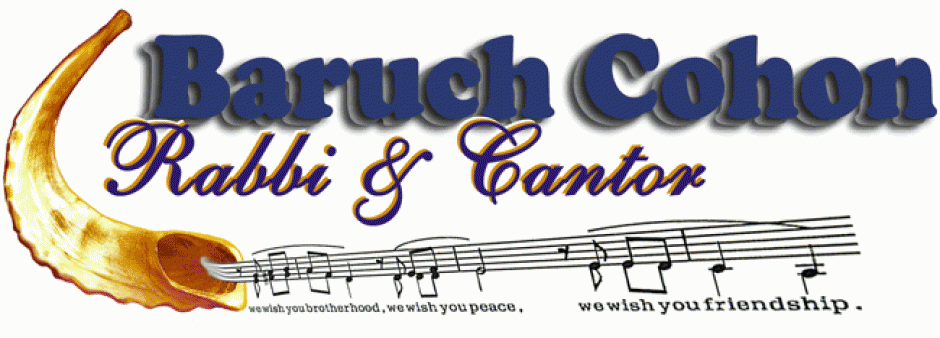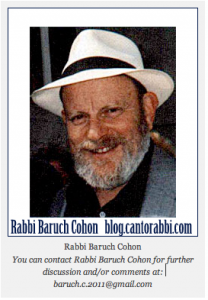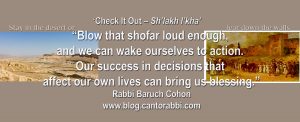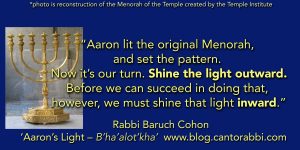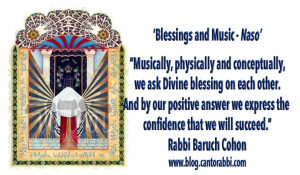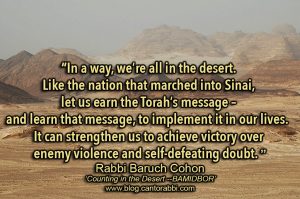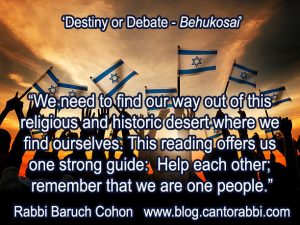CHECK IT OUT – Sh’lakh l’kha – Num. 13-15, by Rabbi Baruch Cohon
You get a call from your friend, or an employee, or a member of your family, advising you of an opportunity. A home for sale in a neighborhood you like. You are interested. So you suggest: check it out.
Depending on how that person goes about checking out the prospective purchase, you may or may not want to make an offer on it. For example, here’s one kind of report:
“The house looks solid enough. Roomy, too. It has a big yard with fruit trees. In fact, we picked a couple of lemons and this avocado – not bad, eh? Can’t get in to see the inside because the agent demands an accepted offer first. It’s been painted recently, so the price is very firm. Questionable neighborhood. Right down the street we saw some grafitti. Kids strolled by wearing their hats backwards. May be gang infested.”
And here’s another:
“Got talking with the lady next door. Found out the owner is very anxious to sell. Open to any offer. Just modernized the kitchen and redecorated, and then got transferred to the east coast. So he has no cash on hand to put down on a home there. Anyone with a large down payment can write their own ticket. Neighborhood Watch is very effective; no major problems.”
Are these two people talking about the same house? Sure they are. Just as the two groups of spies we can read about in this Torah portion, and in its Haftorah, the corresponding prophetic reading in the book of Joshua. They were both talking about the same country. An important difference is how they “checked it out.”
The 12 spies Moses sends out are princes. Executives. Commissioned officers. They follow accepted procedures – sample the fruit, assess the strength of the fortifications, take note of the appearance of the local population. If they only had video, maybe they could bring back picture and sound to back up their report of 50-foot-high walls and men of giant size. By a vote of 10 to 2, they convince the people that Canaan can’t be conquered.
The 2 spies Joshua sends are different. One is 80-year-old Caleb – the only surviving member of the original checker-outers and one of the dissenting minority (Joshua himself being the other dissenter). The second spy is a youth of 18. One chosen for courage, the other for wisdom. They don’t take notes and they don’t bring samples. They spend the night with Rahab. Her occupation is innkeeper, providing accommodations to travelers. From the Hebrew word zonah we gather that she provides other comforts too. Either way, she has ample opportunity to gauge the spirit of the population. She trades her inside information for a guarantee of safety, and the two spies return with a message: Piece of cake.
Chances are, neither report is 100% accurate. But the contrast is phenomenal. The negative report here in Numbers brings on 40 years in the desert. The positive report in Joshua empowers the people and they proceed to take over Jericho in a week.
How do we go about checking out our opportunities? Do we suffocate them by overanalyzing the difficulties? And does that make them look insurmountable?
Am I too old to learn to use a computer? After all, I’m not even a good typist, and computer science is as foreign to me as Swahili. I don’t have money to spend on computer software that can become obsolete in half an hour – let alone the furniture that goes under all that equipment. I’d better stay in the lead pencil desert for another 40 years.
Do I have the discipline to change my health habits? After all, those exercise machines are really no better than a good walk around the block, are they? Didn’t you hear about the fellow that lost big pounds and built up his muscles – and died anyway? I don’t trust these diets either. I’d better stay in the Aspirin and Alka-Seltzer desert for another 40 years.
Can I really patch things up with my sister? So much time went by. She’ll consider me stupid for trying. Whatever happened between us isn’t even the issue any more. We just have different lives now. We build 50-foot walls between us. Our antagonism is too gigantic. Better stay in the breygez (angry) desert for another 40 years.
Let’s take another look. Check it out again. Maybe we can turn part of our future around. Take a message from your friendly “innkeeper:” A computer is just a tool, and a few simple functions of it can make your life easier and more interesting. The first cream puff you forego, and the first stationary bike ride you take, can be the first step to feeling better. And as for your sister, maybe you and she can both conclude that time wounds all heels. Take the first step.
Like Joshua at Jericho, blow the shofar loud enough and the walls come tumbling down.
